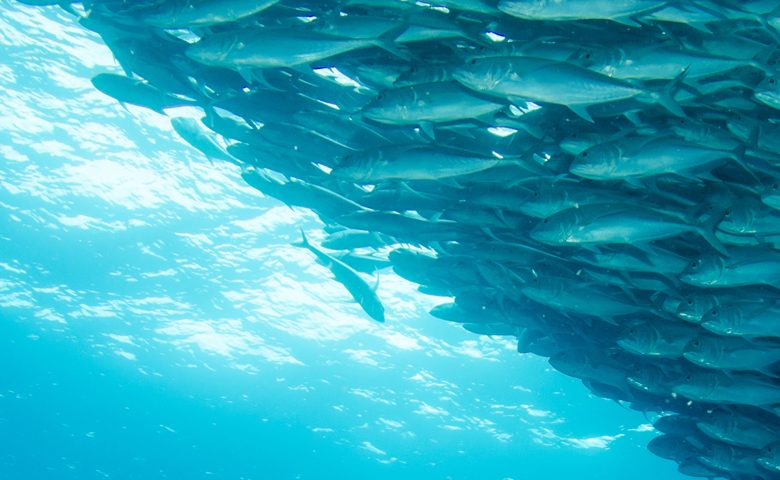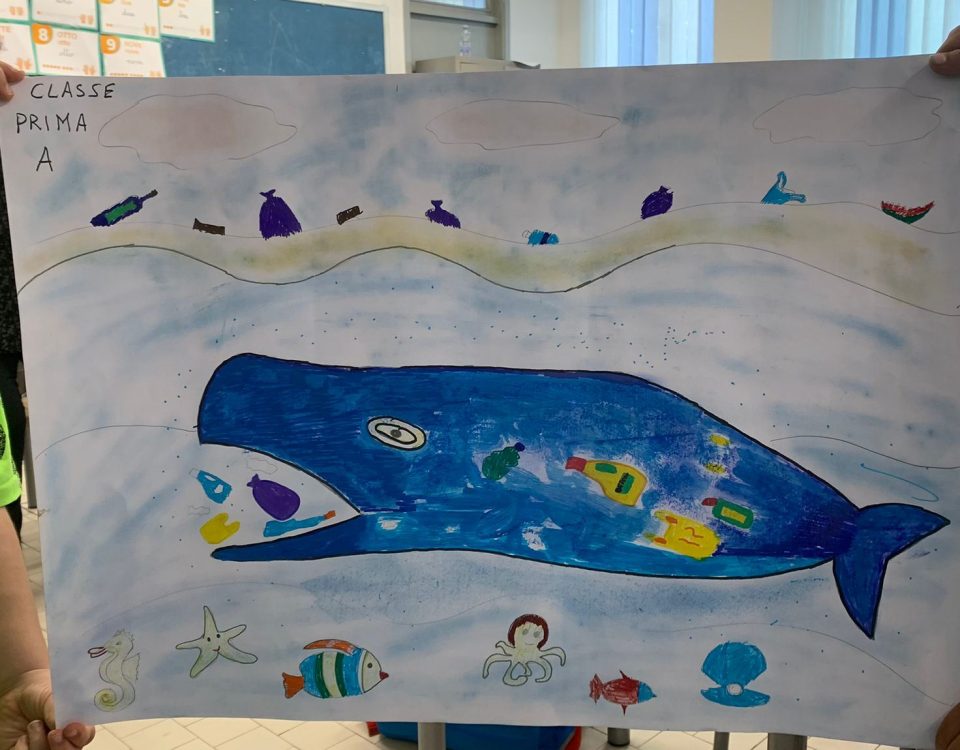RISK ASSESTMENT E RISK MANAGEMENT IN THE SEAFOOD SECTOR

BAPSI Project presented by the partners
Maggio 24, 2021
The courses of the first academy for the fish sector start thanks to the European project BAPSI
Giugno 9, 2021RISK ASSESTMENT E RISK MANAGEMENT IN THE SEAFOOD SECTOR

RISK ASSESTMENT E RISK MANAGEMENT IN THE SEAFOOD SECTOR
Coordinator: Dr. Gabriele Sacchettini (AEIFORIA srl, gabriele.sacchettini@aeiforia.it)
Moderator: MSc Tania Gatto (OpenTEA srl, tania.gatto@opentea.eu)
Teachers:
– Prof. Daniela Mainenti (UTIU Università Telematica Internazionale UniNettuno, daniela.mainenti@uninettunouniversity.net)
– Prof. Ettore Capri (Università Cattolica del Sacro Cuore, ettore.capri@unicatt.it)
Course aims:
“Risk” has appeared more frequently in the fisheries management literature in recent years. The reasons for this are partly internal and partly external. Though terminology varies, there is consensus that there are two stages in dealing with risk. The first is the formulation of advice for fisheries managers in a way that conveys the possible consequences of uncertainty. The second stage is the way fishery managers take uncertainty into account in making decisions. the course aims to provide a full understanding of the concept of risk in this field
Intended learning outcomes:
– Learning outcome 1
Risk management methods provide means to address increasing complexity for successful fisheries management by systematically identifying and coping with risk. The objective of this course is to summarize risk management practices in use in fisheries and to present strategies that are not currently used but may be applicable.
– Learning outcome 2
Available tools originate from a variety of disciplines and are as diverse as the risks they address, including algorithms to aid in making decisions with multiple stakeholders, reserves to buffer against economic or biological surprises, and insurance instruments to help fishermen cope with economic variability.
– Learning outcome 3
Techniques are organized in a two-stage framework. In the first stage, risks are identified and analysed. Strategies presented in this category focus on decision analysis, including multicriteria decision-making tools, and the related concept of risk assessment
Course contents
| Hours | |
| Risk disaster in seafood management | 8 |
| Over the last few decades, natural and human-induced disasters have become more frequent and increasingly destructive. Populations depending on fisheries and aquaculture for their livelihoods have become more and more vulnerable and have been seriously affected by loss of life and property. These disasters are beyond the control of the victims. It is imperative that the particular characteristics of the fisheries and aquaculture sectors and the livelihood contexts of small-scale fishers and fish farmers and their communities be clearly understood from the technical, social and economic points of view. | |
| Emergency response in fisheries and aquaculture. | 8 |
| Legal analysis of new economic models with practical examples also in the light of the latest COVID emergencies. The impacts of any disaster affecting the fisheries and aquaculture sector have the potential for being extremely complex. Understanding and differentiating between these impacts on different groups and their activities will be extremely challenging. Disaster impacts cannot be reduced to a simple set of material losses but are likely to involve the interrelationships between material, human, social and institutional assets and the complex relationships that people depend on to support their livelihoods. | |
| Control measures and sanctions | 6 |
| Sanctions, controls and technical measures. It is recommended that, where appropriate, the maximum monetary sanctions be based on the value of the fishery products obtained by committing the serious infringement and it is recommended that, whenever appropriate, criminal sanctions for “environmental pollution” or “environmental disasters” be applied also in cases of violations of the fisheries legislation. | |
| Blockchain, cyber security and smart contract in the seafood chain | 5 |
| Legal aspects of certification, traceability and new short supply chain models. Blockchain can be defined as a shared and distributed ledger which facilitates the registration process of transactions, and contractual execution, pertaining to an asset (subject of the transaction) in a business network, or ecosystem. All this means associating each physical object which transits from one player to another with a digital identity, thus facilitating traceability along the entire supply chain. This scenario is possible thanks to the special qualities of blockchain technology: • Availability, • Security and privacy, • Consenst, • Transparency and control, Provenance, • Immutability, • Irrevocability (finality), • Flexibility | |
| Seafood products and intellectual property rights | 3 |
| Tools to protect products and processes in terms of intellectual property protection know how trademarks. Many industries and sectors rely on adequate enforcement of their Intellectual Property Rights (IPRs). International developments during last part of 20th century brought to the fore increasing relevance of IPRs in agriculture. Fisheries and aquaculture sector is also not left untouched by this. Fisheries sector is marching forward as cutting edge research and innovations are happening in this field leading to technological developments. It is necessary to understand IPR issues within fisheries sector which can range from traditional fishing to modern nanotechnology, for example. | |
| Standard procedures for environmental impact assessment. When tackling the pressing issue of sustainable development in the Mediterranean Region – among which the challenging issues of rapid urbanisation rates; increasing tourism and coastal zone development and degradation; water scarcity; and trade – the need to establish a knowledge base and help come to grips with the problems is widely recognised, as is the current lack of timely and targeted information for action. To fulfil this need means also to contribute substantially to improving access to environmental data and information at the regional and national levels, both for governmental bodies and other institutions, as well as for the general public throughout the Mediterranean region. | 2 |
| Analysis of European legislation and differences in national interpretations It is important to identifie and analyse gaps and inconsistencies in the current European standards and regulations worldwide, taking into account the following traceability specifications requested by member countries, namely: (i) how the integrity of product tracking is maintained; (ii) special consideration for developing countries and small-scale fisheries; (iii) the notion of equivalency; and (iv) the notion of harmonization. Seafood traceability approaches remain underdeveloped and fractured across geographies, jurisdictions and market sectors | 3 |
| European frameworks on stock assessment and administrative law principles | 3 |
| Analysis of European legislation and differences in national interpretations. The EU has since the beginning of the 21st century taken significant steps to better involve stakeholders and establish quantitative targets through management plans, and a landing obligation is gradually being implemented from 2015 onward. The situation of EU fisheries has substantially improved over the period 2004–2013 in the northeast Atlantic, with fishery status getting close to that in the other jurisdictions, but the lack of recovery for Mediterranean fish stocks remains a concern. | |
| Focus on: Risk assessment in food safety | 2 |
| Food risk assessment of fish products. Analysis of case studies and methods for management within the supply chain. Fisheries comprise the fastest growing sector meeting the global protein requirements. Being an affordable enterprise, it is considered a safe source of food and the muscles of healthy fishes are almost sterile. However, a multitude of hazards (biological, chemical, and environmental) can be introduced into aquaculture throughout the production and supply chain. Also, it can originate from unsuitable farming practices, environmental pollution, and socio-cultural habits prevailing in various regions. With an increasing global population and demands for aquacultural products, assessment and regulation of food safety concerns are becoming significantly evident, so ensuring safe, secure, affordable, and quality food for all in a global context is pragmatically difficult. In this context, it is quite imperative to understand the ecology and dynamics of these hazards throughout the entire production chain in a One Health approach. |
Course structure:
Week 1:
– Self assessment
– Presentation+ learning webinar (Risk disaster in seafood management)
– Units self-paced+ discussion on:
Emergency response in fisheries and aquaculture
Control measures and sanctions
Blockchain, cyber security and smart contract in the seafood chain
– Learning forum
– Additional resources
– Learning webinar (Seafood products and intellectual property rights)
Week 2:
– Units self- paced + discussion on
Standard procedures for environmental impact assessment
Analysis of European legislation and differences in national interpretations
European frameworks on stock assessment and administrative law principles
Focus on: Risk assessment in food safety
– Additional resources
– Learning forum
– Learning webinar (Wrap up on main topics and Q&A)
– Final Self-assessment
Course material:
Course materials include, but are not limited to, lectures, lecture notes, and materials, syllabi, study guides, bibliographies, visual aids, images, diagrams, multimedia presentations, web-ready content, and educational software.
Teaching method:
Visualization, cooperative learning, inquiry-based instruction, differentiation, technology in the classroom, behavior management, professional development on-line and face to face classes both.
Assessment method and criteria: Tests, oral assessments, project work.
Notes and prerequisites: High school diploma is expected.

